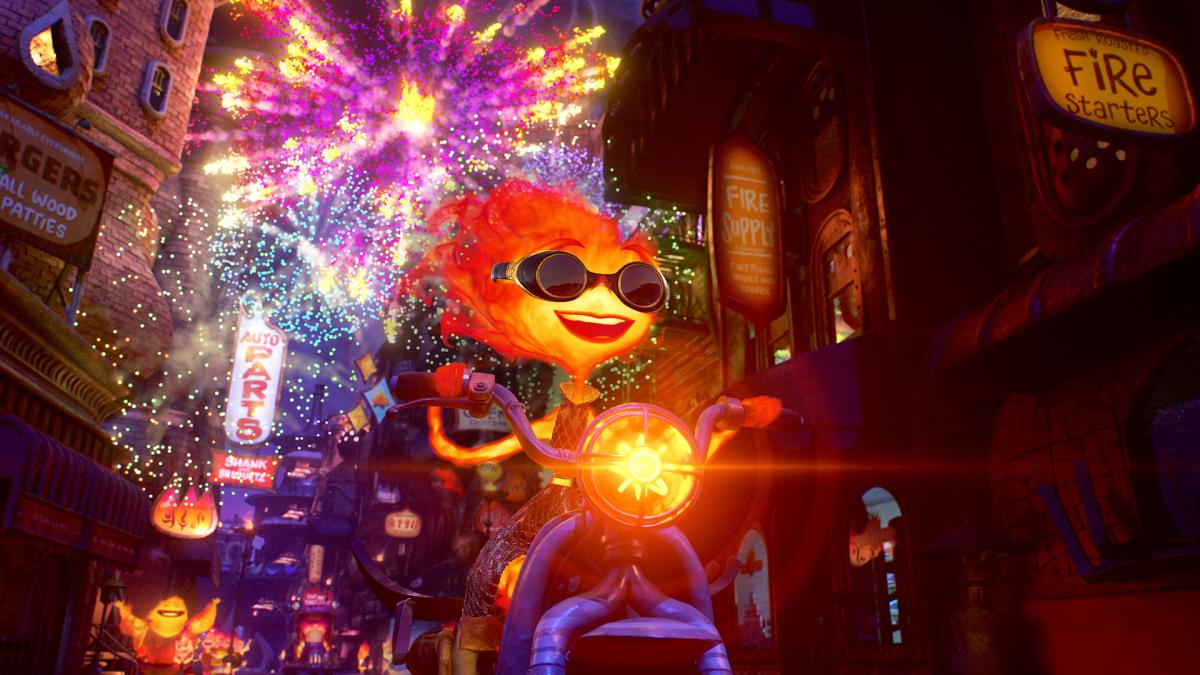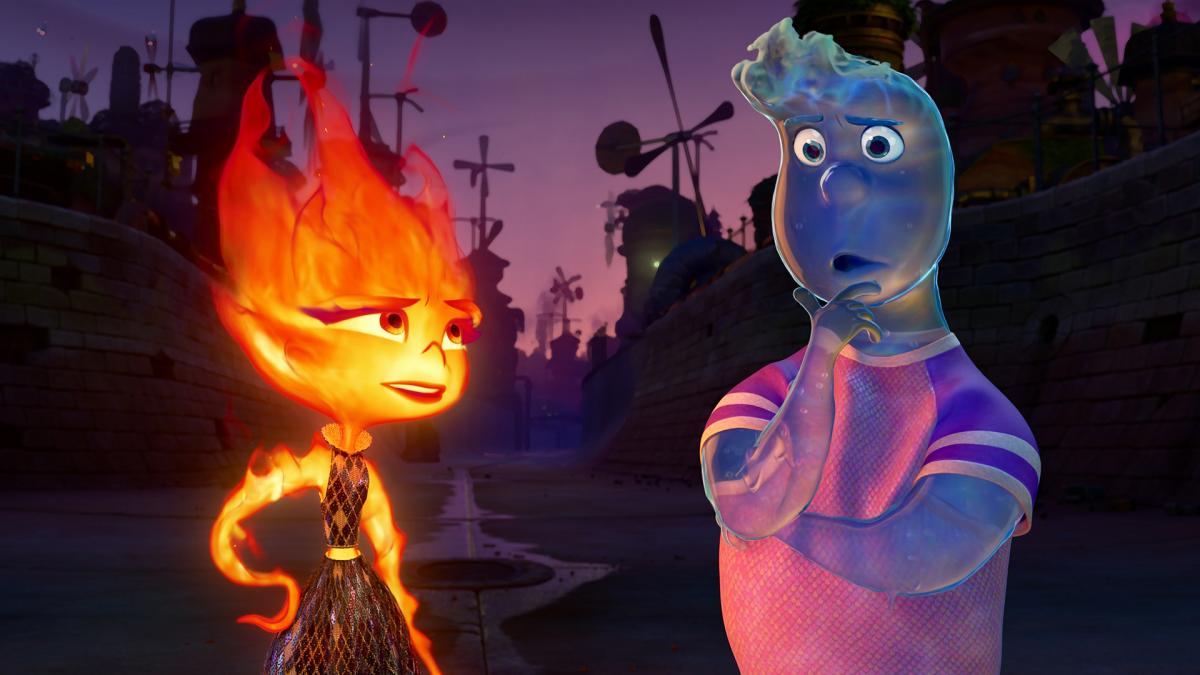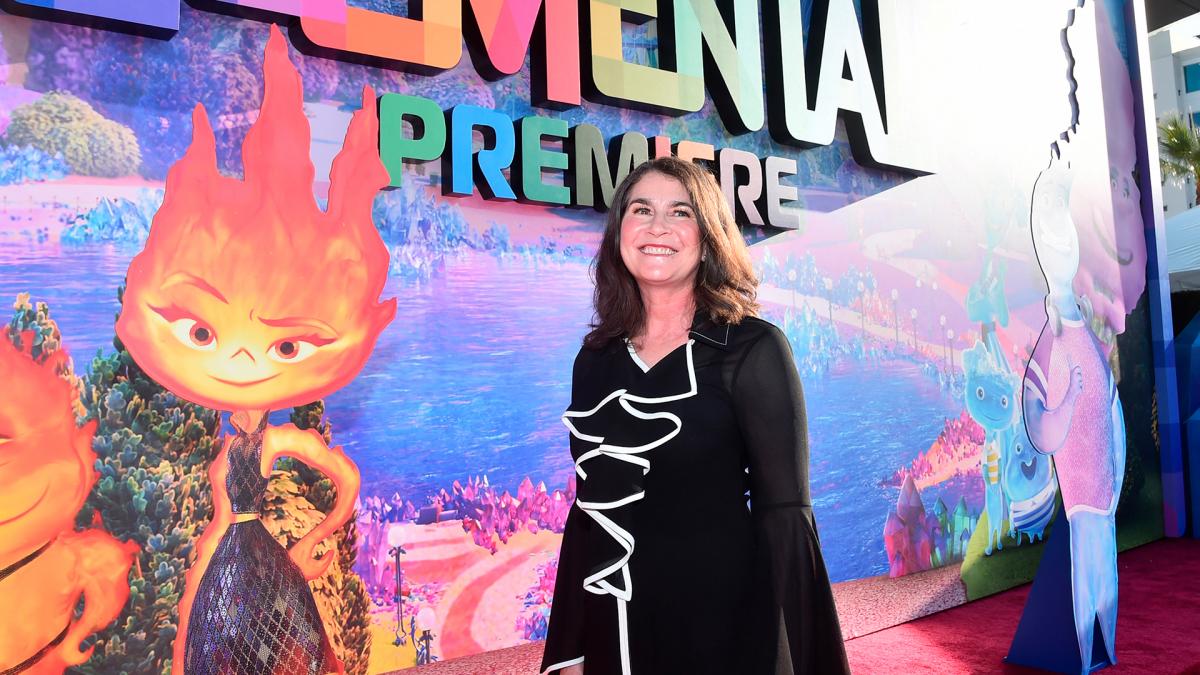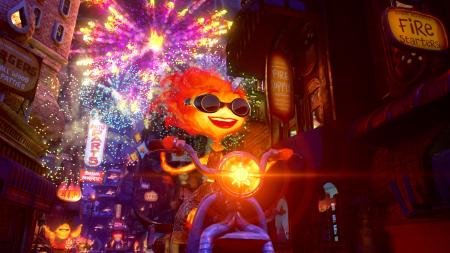 Here comes “Elements,” a colorful multicultural love journey from Pixar. Photo: Press
Here comes “Elements,” a colorful multicultural love journey from Pixar. Photo: Press
“Elements”, the new animated film from Disney-Pixar studios which arrives in theaters this Thursday, creates a completely new narrative and visual universe, but with the usual signs of emotion, to tell the story of a young woman of fire torn between her family tradition and the tempting contact with other cultures, experiences and relations.
“I think multiculturalism adds wealth to the world,” he said in an interview with Télam the film’s director, Peter Sohn, who devised the plot inspired by his own experiences as a youth as a New Yorker from the Bronx, the son of South Korean immigrants.
The talk took place at the luxurious Carlton Hotel in Cannes, located on the beautiful La Croisette and a few minutes’ walk from the Palais des Festivals, which hosts the most important annual film festival in the world. It was hours before “Elementos” had its world premiere as the closing performance of the 2023 edition of the Festival.
It was the fourth film from the studio owned by The Walt Disney Company. which had the honor of being selected for the traditional cinephile show on the French Riviera, after “Up: A High Adventure”, “Intense-Mind” and “Soul”, something that perhaps indicates an inclination of its organizers, since precisely these last two were also led by anthropomorphized concepts, such as emotions or souls. Now it was nature’s turn.
 It is the fourth film from the studio owned by The Walt Disney Company. Photo: Press
It is the fourth film from the studio owned by The Walt Disney Company. Photo: Press
The animator and director, who was previously in charge of one of the Pixar titles that may have gone most unnoticed, “A Great Dinosaur” (2015), He assured that although he had not tried to “turn it into a political film”, his experiences with a multicultural identity and the effort of his parents as immigrants had driven this story.
“I still get really emotional to this day thinking about how difficult it was for them. And that was the path we were trying to take,” Sohn said.
What is the story about
“Elements” tells the story of Ember, a young woman of fire who lives in Element City.a metropolis in which its culture coexists, more or less in harmony, with people of water, land and air.
daughter of foreign parents Ember grew up with a tough personality, distrustful of the rest of the elements, and with a ferocity that she finds difficult to keep at bay. She has known for as long as she can remember that she will inherit the neighborhood business her father worked so hard to build and is a pillar of the Fire District community.
However, when she meets Wade, a funny water boy with whom she begins to fall in love, her beliefs about the world she lives in and her own identity begin to shake.
With an impressive visual invoice that caused it to be one of Pixar’s longest-running projects, “Elements” presents a new world but not for that strange. Although it proposes a romance at the center of the plot -something unprecedented in the brand’s previous 26 feature films- its story about old and new sentimental ties, the humorous celebration of diversity and the commitment to build bridges over differences carry the unmistakable emotive stamp from Pixar.
-For this film they had a challenge, which was not only to create a group of characters, but also to create a whole new world for them. How did this setting influence the shape the protagonists took, and vice versa, how did the characters influence what this world could be?
–In all honesty, as hard as it was to make the movie, building this world was one of the most fun we had in the process. The route to building the world was all through our main character, from the young fire woman, Ember. We thought, “she’s fire, what would make it harder for her to be in the city?” And it was very easy: “Oh, it must be a world built by water”, with canals, waterfalls and the water from the elevated train everywhere, that would make things difficult for him. We then said that if this was a city like any major city, some would have populated it first and those are the water people. Then the earth, then the air, lastly the fire. So we thought about what the buildings would look like, trying to exploit everything that would be difficult for Ember, but at the same time making it a world where each of those elements mixed and worked together. The air blowing over the land, the water feeding the land to make things grow. All of that was a lot of fun.
-So the vision they had about the characters determines the shape of the world.
-The characters come first; if Ember was realistic, if the fire was real like a live action movie (live action, not animated), then the city would have to be more realistic. If Ember’s fire was like a 2D drawing, then the city would have to be 2D. So we had to find the balance of Ember, how real and how drawing is she? Once we found that balance, we were able to design the city.
 The film takes place in a completely new narrative and visual universe. Photo: Press
The film takes place in a completely new narrative and visual universe. Photo: Press
-One of the themes of the film is immigration, which is as old as the world, but at the same time one of the main conflicts of the present. Why did you want to address that issue?
-It’s very easy for me. I was born in New York and my parents were born in South Korea, they had immigrated to the US and when I was a kid I made fun of it. He was a terrible son, I didn’t understand him. He was thinking “how come they’re not American? We should be more American”, they were so Korean…he was almost embarrassed. As I got older I began to understand how difficult it was for them. They told me all these stories about when they arrived, that they didn’t speak the language, that they had no money. They couldn’t get a job, and my father worked very hard to find a business to bring food to our family. What they had made all these sacrifices for, which I didn’t understand until I was much older and had children of my own. That was the heart of the movie, thanking our parents for the sacrifice, and immigration was part of that burden they had to carry. I wanted to show the audience that these people went on a journey that was difficult and that would be something that Ember would start to understand along the way and hopefully the audience as well.
-Another of the important themes of the film is that of identity.
-Yes, a big part of Ember’s journey is understanding her own identity. When she leaves her country, that is her father’s greatest fear: that she is going to lose a part of her identity, that it will be diluted. And I felt that growing up. I remember that my parents drew a line where theirs ended and where this other culture begins. She would tell my mother “you should speak more English” and she would refuse: “No, that’s my limit”. I grew up as an Asian in the United States, and sometimes you are seen as a foreigner even though I was born there. You are in this middle place. It’s a very similar journey for Ember in the film as well, trying to understand that she’s part of one world, but something from the other begins to draw her in and become a part of it. It’s not just about the cultural tradition you come from; the connections you make begin to form your identity.
 The story reflects a young woman on fire torn between her family tradition and the tempting contact with other cultures, experiences and relationships. Photo: Press
The story reflects a young woman on fire torn between her family tradition and the tempting contact with other cultures, experiences and relationships. Photo: Press
-Play with the idea that there is not just one world, but that there are many.
-When I was growing up, it was all about assimilation, integration into culture, but then I discovered that there is this other part of identity that you cannot lose and that is how I began to see it from multiculturalism. And I really believe that multiculturalism adds richness to the world, rather than just a monoculture. The movie definitely builds on this. I mean, diversity is so important in our lives, but it’s not just that Ember is trying to empathically understand and connect with that diversity, her journey is really understanding that part of herself, what her culture is, and what her identity is. and she could never do without that compassion to understand the differences.


